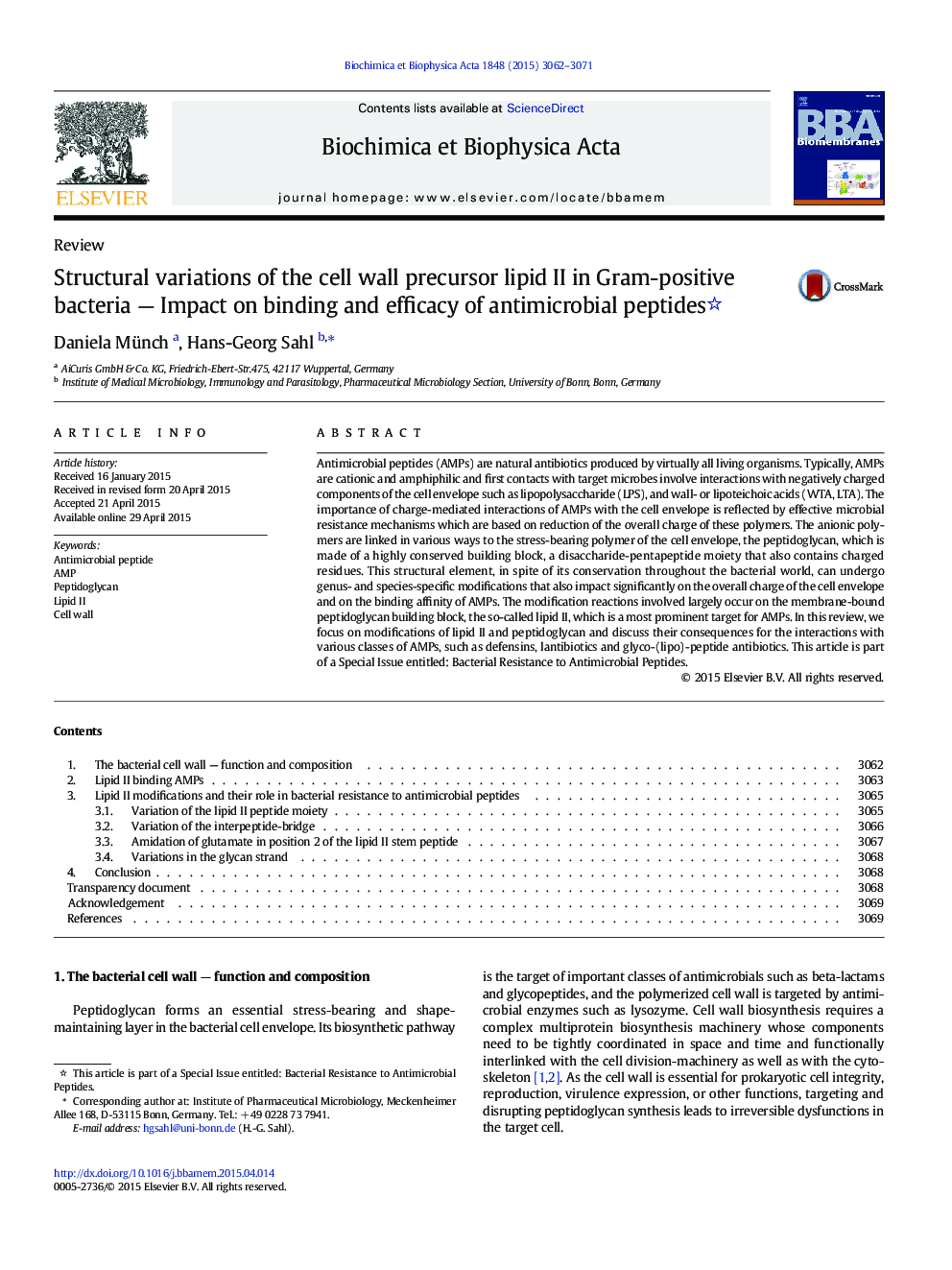| Article ID | Journal | Published Year | Pages | File Type |
|---|---|---|---|---|
| 1944016 | Biochimica et Biophysica Acta (BBA) - Biomembranes | 2015 | 10 Pages |
•AMPs interact with the bacterial cell envelope.•A most prominent target for AMPs is the peptidoglycan building block lipid II.•Lipid II modifications highly impact on the binding affinity of AMPs.•Lipid II modification-enzymes constitute interesting targets for new anti-infectives.
Antimicrobial peptides (AMPs) are natural antibiotics produced by virtually all living organisms. Typically, AMPs are cationic and amphiphilic and first contacts with target microbes involve interactions with negatively charged components of the cell envelope such as lipopolysaccharide (LPS), and wall- or lipoteichoic acids (WTA, LTA). The importance of charge-mediated interactions of AMPs with the cell envelope is reflected by effective microbial resistance mechanisms which are based on reduction of the overall charge of these polymers. The anionic polymers are linked in various ways to the stress-bearing polymer of the cell envelope, the peptidoglycan, which is made of a highly conserved building block, a disaccharide-pentapeptide moiety that also contains charged residues. This structural element, in spite of its conservation throughout the bacterial world, can undergo genus- and species-specific modifications that also impact significantly on the overall charge of the cell envelope and on the binding affinity of AMPs. The modification reactions involved largely occur on the membrane-bound peptidoglycan building block, the so-called lipid II, which is a most prominent target for AMPs. In this review, we focus on modifications of lipid II and peptidoglycan and discuss their consequences for the interactions with various classes of AMPs, such as defensins, lantibiotics and glyco-(lipo)-peptide antibiotics. This article is part of a Special Issue entitled: Bacterial Resistance to Antimicrobial Peptides.
Graphical abstractFigure optionsDownload full-size imageDownload high-quality image (135 K)Download as PowerPoint slide
